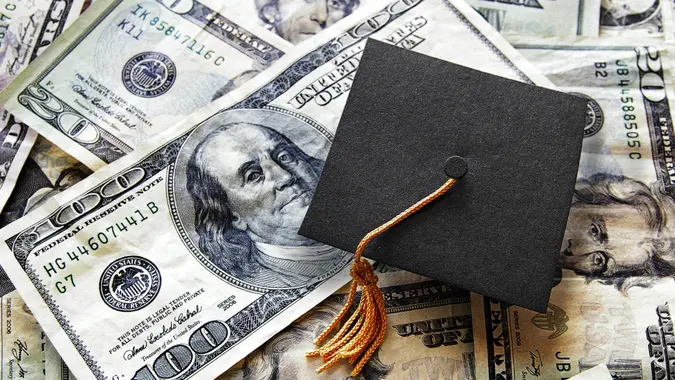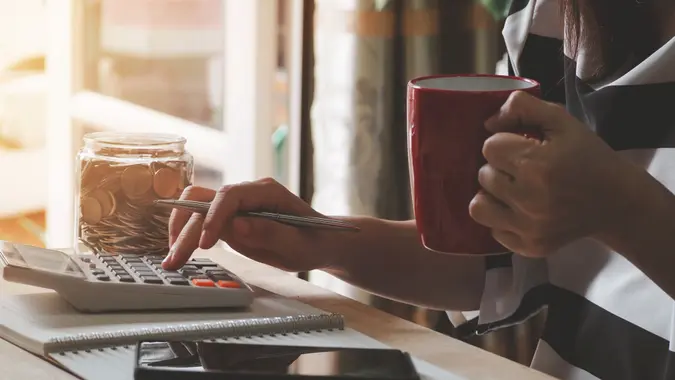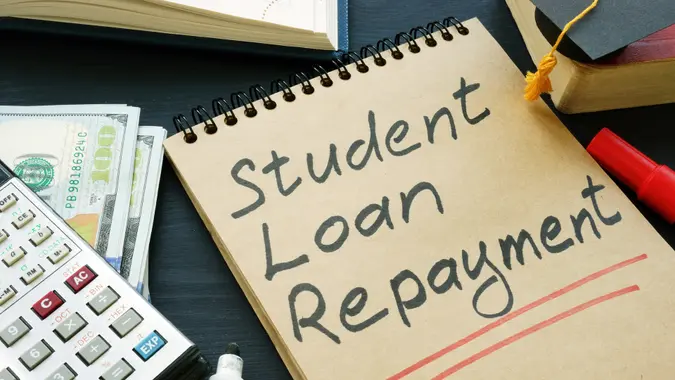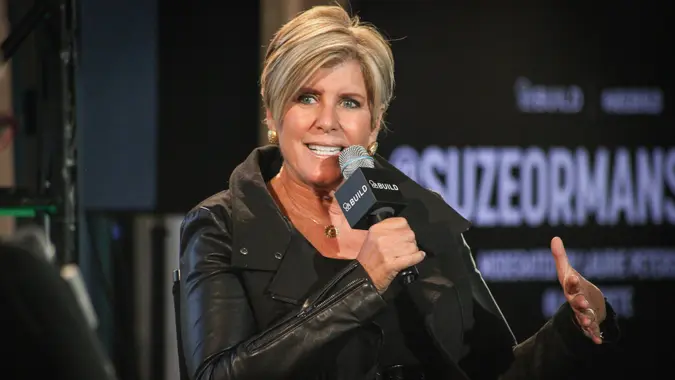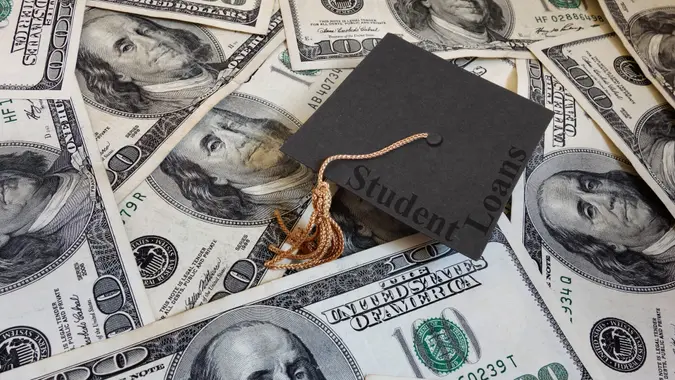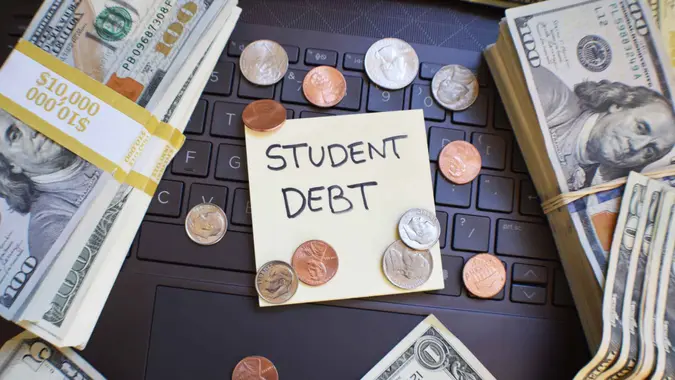I Paid $50,000 in Interest on My Student Loans: What I Wish I’d Known

Commitment to Our Readers
GOBankingRates' editorial team is committed to bringing you unbiased reviews and information. We use data-driven methodologies to evaluate financial products and services - our reviews and ratings are not influenced by advertisers. You can read more about our editorial guidelines and our products and services review methodology.

20 Years
Helping You Live Richer

Reviewed
by Experts

Trusted by
Millions of Readers
Janelle Hanchett, a writer from California who now lives in the Netherlands, graduated from high school in 1997 with big dreams. She was accepted into UC Davis to study English and Spanish literature and knew she would have to take out student loans.
“I was the first person in my family to go to college, and totally on my own with all of it,” she said. She came from divorced parents who did not have the money to help her pay for college. “My only way of going was student loans.”
You didn’t think about what that meant or entailed in advance, she said. “Student loans were just what you did; it was just sold that way.”
In fact, what she learned from the financial aid counselors at UC Davis was that her loans would be “very low interest, but if you can’t afford them, you don’t have to pay.”
Reassured that if she couldn’t afford to pay them immediately after graduating from college, she would not go bankrupt or have her wages garnished, she signed up.
Life’s Curve Balls
Hanchett worked from “day one of college,” she said — not just one but sometimes multiple jobs, such as waitressing and lifeguarding, all the way through.
In her senior year of college, at age 23, she and her husband found themselves pregnant. “That put me on a path of not making enough money, not being able to pay back loans,” she explained.
They were doing all they could at the time to get by, and she always maintained a very high GPA. Her husband worked on his father’s ranch, she took a year to stay at home with their baby, and times were hard.
“We were barely making it, so I couldn’t afford to pay the full amount I owed each month on just the $30,000 of my undergraduate loans,” she said.
All or Nothing
Not that she didn’t try. “At the time, if you couldn’t pay the full loan amount, you could pay nothing. That was the rule. You were either in forbearance or paying the full amount,” Hanchett said.
Unable to pay what the loan company asked, she kept her loans in forbearance, not thinking about how much or how quickly that 7% interest would add up.
“I had another baby, went to grad school, which added another $20,000 to $30,000, and still couldn’t afford to pay,” she said.
By the time she and her husband were in a relatively stable financial place, the monthly student loan payment they expected from her was $1,700 per month. “We couldn’t pay it.”
She said she’ll never forget the phone call with the student loan people when she asked if she could pay around $400 to $500 per month just to keep the interest from accruing, and they refused. “I was so incredulous that they wouldn’t let me pay a portion of my loan to keep the interest down. Soon it was up to $105,000.”
Obama Brings Relief
It wasn’t until after President Obama was elected in 2008 and eradicated the rule to pay all or none of student loan debts, plus added options for repayment, that she was able to start making a dent in her sizable debt.
“When Obama came in, I set up a payment of $776 per month. We had four kids. Our mortgage payment was $1,350, for reference. I made every single payment every month for five straight years, which is like $46,500. Yet my actual student loan principal went down by only about $2,800.”
She has continued paying on her loans and estimates that she’s paid $50,000 or so in interest so far. She can’t help but think about how that money could have been going to her own children’s educations.
Biden Administration’s SAVE Act
After years of making her $776 payments — having to manually reapply for hardship exceptions with a packet of financial paperwork each year — Hanchett suddenly received a letter from the Biden Administration regarding the SAVE Act, which put her student loans on a monthly payment plan of just $12 per month.
“When I got that email, I couldn’t believe it. I thought I had done something wrong or submitted something wrong. And it automatically renewed a couple months ago,” she said.
She added, “It’s one of the few times where I’ve had a direct and material change to my life from a sitting president.”
Understanding Repayment Realities
Hanchett wishes she’d known how stringent the rules on student loan repayments were — and how minimal the repayment options were — before she took out her loans.
“I wish I had known that if I couldn’t pay the full amount, it was just going to be accruing 7%, and if that goes on for 30 years, your $30,000 becomes $70,000 becomes $100,000.”
She reflected on the unfair reality that you can rack up the same amount of credit card debt and declare bankruptcy to get out of paying it, but you can’t ever do that with student loans.
What She Would Have Done Differently
If she knew then what she does now, she said she wouldn’t have gone to graduate school and she would have gone to a junior college instead of a university.
“One hundred percent, I say go to a junior college — it’s so much cheaper. Your diploma from the school isn’t going to say ‘went to a junior college,'” she added.
Hanchett finds the whole student loan interest business to be a racket that preys on young people. “What 19 year old is reading the fine print of these complicated loans?”
It’s also in stark contrast to a lot of the low cost and free education available in Europe, where she and her family now live.
While the Biden Administration has done a lot to help both forgive and set up more reasonable payment plans for student loans, it’s a wise idea to do thorough research and make careful calculations before you take out any loans for yourself or help your children to do so.
More From GOBankingRates
 Written by
Written by  Edited by
Edited by 




